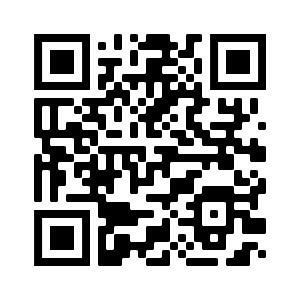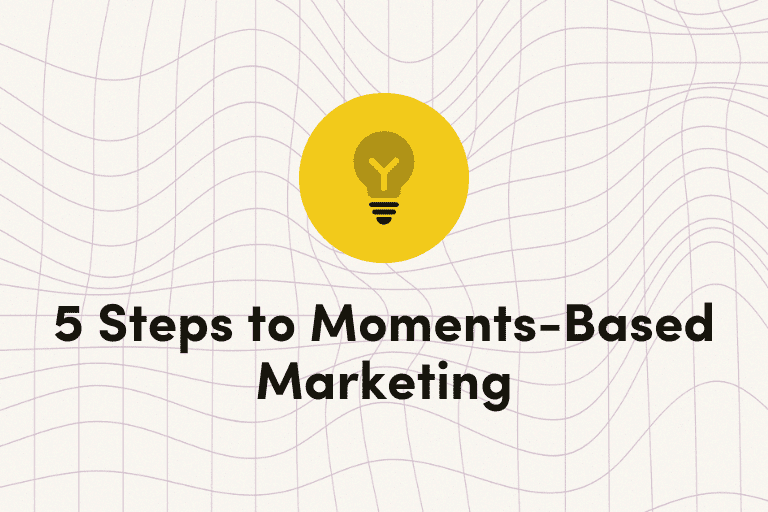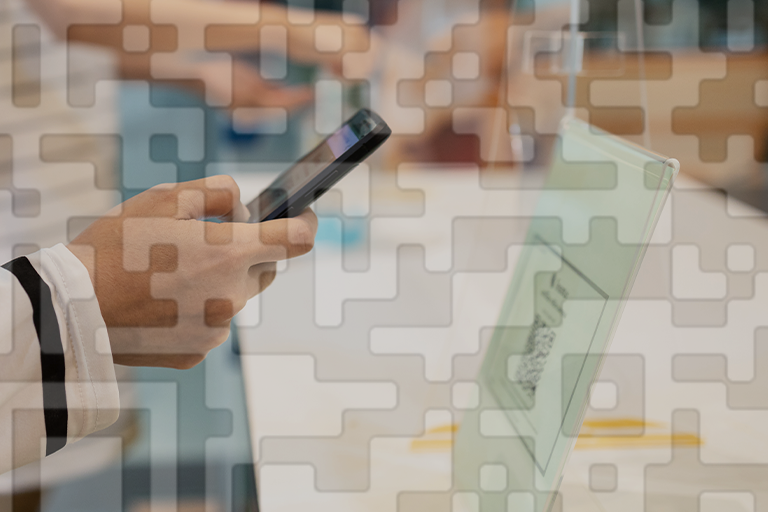We are in the midst of a QR code renaissance. These scannable squares that link to a website have regained popularity because of their contact-free capabilities in a post-pandemic world.
Created in 1994 by DENSO WAVE, the QR code was originally developed as a method for storing more information than a traditional barcode, which could only store 20 alphanumeric characters. But, in addition to storing alphanumeric data, Japanese users wanted a code that could store Kanji and Kana—the Japanese print alphabet.
And thus, the QR code was born.
Nowadays, 6.64 billion people worldwide have smartphones and, with them, the ability to scan QR codes and seamlessly visit mobile sites or apps. QR codes are particularly helpful when it comes to bridging the digital and physical. Restaurants can use QR codes to lead users to an online menu, stores can use QR codes to provide customers with additional product information, and brands can send direct mail with QR codes, bringing users their website.
But, as a result of a recent TV spot, some users are questioning the security of QR codes. Yes, users can get company information, but what can brands learn about the customers?
Is Privacy a Real Concern?
The recent TV commercial, featuring a floating QR code, sparked some controversy because it was equated to a phishing email. Without any context, viewers were prompted to visit a website—and it worked! But, what information does the brand now have? What doors did this open for actual hackers to try the same thing?
A new type of QR-enabled phishing attack has been named “quishing.” Because QR codes can bring users to an unknown website, it’s a sneaky way for hackers to steal personal information and behavioral data. Generally, if you ever see a lone QR code, without context, don’t scan it. But, with the right context around them, QR codes can be successfully used by brands.
QR codes are a great method for collecting customer information in a situation where gathering customer insights might be difficult. Like Consumer Goods Technology says, “QR codes work the same way as the traditional methods of first-party data collection—they simply introduce a digital interaction to an otherwise offline space.” But, first-party data isn’t zero-party data. You’re not explicitly asking customers for information, you’re collecting behavioral data, like you would if they visited your website. Telling customers you’re gathering data and then explaining how you’ll use that data can help ease customer concerns around first-party data collection.
Defying the Digital
The tricky part with collecting behavioral data from QR codes, however, is that while it’s expected that brands collect first-party data when customers are actively browsing websites, when customers are offline, they may not want to be pulled into a digital world. QR codes may bridge the gap, but do customers always want to cross the bridge? As Eric Rescorla, CTO of Firefox, told The Washington Post, “I’m not sure I want my pizza place to understand me much better than it does now.” QR codes are not all bad, though.
Are There Benefits of QR Codes?
Bridging gaps and blurring the lines between marketing channels is key in creating a seamless cross-channel marketing experience. The same Washington Post article uses the example of jeans that have a QR code on the tag. Customers can scan the code to learn more information. Then, because of the collected behavioral data, when that same user goes to that brand’s site, the jeans could be waiting in their shopping cart with a discount attached. As Brent Ramos, Director of Product for Search at Adswerve pointed out in the article, “That’s a benefit for the consumer and the brand, right?”
QR Codes and the Customer Experience
It’s true—creating this frictionless experience is ideal, and even becoming the norm. But, brands still need to be overt in how they plan to use collected data. Especially when it’s being collected via an originally physical, not digital, channel—like in-store. Creating a cross-channel experience is all about meeting, and exceeding, customer expectations. So, if a customer isn’t expecting to share data in an online space, your brand needs to alert them that this could happen when they scan a QR code.
Creating a completely digital cross-channel experience is one thing, but jumping between the physical and digital is a whole new animal. Think about when customers click push notifications or open emails and are guided to your app or website. They’re already primed to be in a digital environment, they know there’s a certain level of data being shared and they’re prepared for it. When your brand opts to include QR codes on direct mail assets or in TV spots, it’s important to consider the customer journey. Where is the customer when they’re scanning the QR code? How is taking the customer to your website going to impact their relationship with your brand?
For example, if your customer is at the mall and is looking to shop in-store, a QR code should link to something that improves their in-store experience, not their online one. Maybe it’s a map that shows shoppers how to find your store in the mall, maybe it’s an in-store-only coupon, maybe it’s both! The experience, offline, is different and needs to be a consideration for your brand when using QR codes.
Be Helpful, Not Disruptive
The moral of the story is that while there may be privacy concerns for customers using QR codes, it shouldn’t be much different than when a customer is on your website. Be explicit about how you’re collecting and using customer data and make it worthwhile for the customer. Your goal, whether using QR codes or not, is to make the customers’ shopping experience easier.
To learn more about creating a seamless cross-channel experience, scan the QR code below or use this link to schedule an Iterable demo today.


Scan the QR code to schedule an Iterable demo.
































